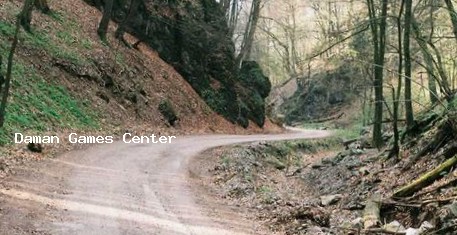Guardians of the Indian Shogunate
An epic journey through India's rich history, where you become a guardian of ancient traditions and fight for honor and glory.
📜 Overview of Guardians of the Indian Shogunate
Guardians of the Indian Shogunate is a groundbreaking action-role playing game developed specifically for the Indian gaming market. Released in 2023 by a leading Indian game studio, the game has taken the nation by storm with its unique blend of historical fiction and fantasy elements.
Set in an alternate version of medieval India, the game allows players to assume the role of a guardian tasked with protecting the shogunate from various threats, both internal and external. The game's narrative draws heavily from Indian mythology, history, and cultural traditions, creating an immersive experience that resonates deeply with Indian players.
What sets Guardians of the Indian Shogunate apart from other games in the genre is its authentic representation of Indian culture, landscapes, and traditions. From the bustling markets of ancient cities to the serene beauty of Himalayan foothills, every aspect of the game world has been meticulously crafted to reflect India's diverse heritage.
The game development started way back in 2018, with a small team of 15 developers who were passionate about Indian history. As the project grew, more people joined, including historians, cultural experts, and even folk artists who helped in designing the traditional art forms seen in the game.
Many players have reported that playing Guardians of the Indian Shogunate has sparked their interest in Indian history and mythology, with some even visiting historical sites mentioned in the game. This educational aspect has made the game popular not just among young gamers but also among parents who appreciate its cultural value.

Official game cover of Guardians of the Indian Shogunate featuring the main protagonists in traditional warrior attire
Development Journey 🛠️
The journey of creating Guardians of the Indian Shogunate was not an easy one. The development team faced many challenges, especially in balancing historical accuracy with engaging gameplay. They spent countless hours researching ancient texts, visiting museums, and consulting with historians to ensure that the game's world would feel authentic.
One of the biggest challenges was representing India's linguistic diversity in the game. The team worked with language experts from across the country to ensure that the dialogue and text in different languages were accurate and culturally appropriate.
The developers also faced technical challenges, particularly in optimizing the game for the wide variety of mobile devices used in India. They spent extra time ensuring that Guardians of the Indian Shogunate would run smoothly even on budget smartphones, which make up a significant portion of the Indian market.
The game's development team consisted of historians, cultural experts, and gaming professionals who worked together to ensure that Guardians of the Indian Shogunate remains both entertaining and respectful of India's cultural heritage. This attention to detail has been widely praised by both critics and players alike.
Available on multiple platforms including mobile devices, PC, and major gaming consoles, Guardians of the Indian Shogunate has been designed to be accessible to a wide range of players while offering deep gameplay mechanics that will satisfy even the most hardcore gaming enthusiasts.
Since its release, the game has received regular updates that introduce new content, fix bugs, and improve gameplay based on player feedback. The development team has maintained an active presence on social media and gaming forums, often engaging directly with players to address their concerns and suggestions.
🎮 Gameplay of Guardians of the Indian Shogunate
The gameplay of Guardians of the Indian Shogunate combines elements of action, role-playing, and strategy games to create a unique experience. Players start by creating their own guardian character, choosing from several different classes each with their own unique abilities and playstyles.
Character classes include the Rajput Warrior, specializing in close combat with traditional weapons; the Brahmin Sage, who uses ancient knowledge and magic; the Maratha Scout, adept at stealth and ranged attacks; and the Sikh Defender, known for their resilience and defensive capabilities.
As players progress through Guardians of the Indian Shogunate, they earn experience points that can be used to level up their characters, unlocking new abilities and improving existing ones. The game features a deep skill tree system that allows for a high degree of customization, ensuring that each player's guardian feels unique.

Intense combat scene from Guardians of the Indian Shogunate showcasing the game's fluid battle mechanics

Exploring the vast open world of Guardians of the Indian Shogunate featuring stunning Indian landscapes
Open World Exploration 🌍
Guardians of the Indian Shogunate features a massive open world that players can explore at their own pace. The world is divided into several regions, each inspired by different parts of India, from the lush greenery of Kerala to the arid deserts of Rajasthan.
While exploring, players will encounter various non-playable characters (NPCs) who offer quests, trade goods, or provide information about the world. The game also features dynamic events that can occur at any time, such as bandit attacks, natural disasters, or festivals, keeping the world feeling alive and unpredictable.
The open world is filled with hidden treasures and secrets waiting to be discovered. Players who take the time to explore off the beaten path are often rewarded with rare items, powerful weapons, or pieces of ancient lore that shed light on the game's backstory.
Traveling across the large game world can be done on foot, but players can also acquire various mounts as they progress. These include horses, elephants (for ceremonial purposes and battles), and even mythical creatures like the garuda or the yali, which become available later in the game.
Combat System ⚔️
The combat system in Guardians of the Indian Shogunate is fast-paced and skill-based, requiring players to master timing, positioning, and the proper use of abilities. Players can use a variety of traditional Indian weapons, including swords, spears, bows, and even more exotic weapons like the urumi (flexible sword) and the khukuri (Gurkha knife).
Combat also incorporates elements of Indian martial arts, with special moves and combos inspired by Kalaripayattu, Gatka, and other traditional fighting styles. This attention to authentic martial traditions has been particularly appreciated by Indian players.
Players can choose to engage in combat directly, using brute strength and skill, or they can employ stealth tactics to take down enemies without being detected. The game's AI adapts to different playstyles, making each combat encounter feel challenging and unique.
For those who prefer a more strategic approach, Guardians of the Indian Shogunate also features a tactical combat mode that allows players to pause the action and plan their next moves. This mode is particularly useful in large battles involving multiple allies and enemies.
Quests and Storyline 📖
The main storyline of Guardians of the Indian Shogunate follows the player's journey from a humble recruit to a legendary guardian, tasked with preventing a great catastrophe that threatens to destroy the shogunate. Along the way, players will uncover ancient secrets, forge alliances with powerful factions, and make difficult choices that affect the outcome of the story.
The narrative is presented through a combination of in-game cutscenes, dialogue with NPCs, and found documents that provide additional context and backstory. The voice acting, available in multiple Indian languages, has been praised for its quality and authenticity.
In addition to the main questline, the game features hundreds of side quests that offer additional challenges and rewards. These side quests often delve deeper into the game's lore and provide opportunities to learn more about the various cultures and traditions represented in Guardians of the Indian Shogunate.
Some side quests are tied to specific regions or festivals, allowing players to participate in traditional activities and learn about local customs. Completing these quests often rewards players with unique items or abilities that reflect the cultural heritage of that region.
Crafting and Economy 🏺
Guardians of the Indian Shogunate features a robust crafting system that allows players to create their own weapons, armor, potions, and other useful items. The materials needed for crafting can be gathered from the environment, looted from enemies, or purchased from merchants.
Each region in the game has its own unique crafting traditions and specialties. For example, players in South India might specialize in crafting intricate bronze weapons and jewelry, while those in the north might excel at creating warm, woolen armor suitable for mountain climates.
The game's economy is dynamic, with prices fluctuating based on supply and demand. Players can engage in trade between regions, buying low in one area and selling high in another. This trading system is inspired by India's historical trade routes, including those of the Silk Road and maritime trade with Southeast Asia.
For players who enjoy economic gameplay, Guardians of the Indian Shogunate offers the ability to establish and manage their own workshops, farms, and trading posts. These ventures can generate a steady income, allowing players to invest in better equipment and resources for their adventures.
👥 Playable Characters in Guardians of the Indian Shogunate
Guardians of the Indian Shogunate offers a diverse range of playable characters, each representing different regions, cultures, and warrior traditions of India. Players can choose their character's background, appearance, and starting abilities, allowing for a high degree of customization.
Each character class has its own unique storyline and quests that explore their cultural heritage and personal motivations for becoming a guardian. As players progress, they can further specialize their characters by choosing from various subclasses and ability trees.
Rajput Warrior

Hailing from the warrior clans of Rajasthan, the Rajput Warrior specializes in close combat with a variety of traditional weapons, including the khanda (double-edged sword), dhal (shield), and spear.
Their combat style emphasizes honor and bravery, with special abilities that allow them to inspire allies and intimidate enemies. Rajput Warriors can wear heavy armor adorned with intricate designs.
Starting region: Rajasthan
Specialty: Close combat, tanking, inspiring allies
Signature ability: "Shakti Strike" - A powerful attack that can knock down multiple enemies
Brahmin Sage

Drawing upon ancient Vedic knowledge and mystical practices, the Brahmin Sage wields powerful magic inspired by Hindu deities and philosophical concepts.
They can call upon the elements, heal wounds, and curse enemies with ill fortune. The Brahmin Sage's abilities are tied to their understanding of dharma (righteousness) and karma (action and consequence).
Starting region: Uttar Pradesh
Specialty: Magic, healing, support
Signature ability: "Brahma's Blessing" - A powerful healing and buffing spell that affects all allies
Maratha Scout

The Maratha Scout is a master of stealth, guerrilla tactics, and ranged combat, reflecting the warfare techniques that made the Maratha Empire a powerful force in Indian history.
They excel at scouting missions, ambushes, and hit-and-run tactics. Maratha Scouts are proficient with the bow, sword, and various tools for stealth and survival in the wilderness.
Starting region: Maharashtra
Specialty: Stealth, ranged combat, scouting
Signature ability: "Phantom Strike" - A stealth attack that deals massive damage to unsuspecting enemies
Sikh Defender

The Sikh Defender combines fierce warrior skills with a strong sense of justice and protection, inspired by the Sikh warrior tradition of protecting the weak and upholding righteousness.
They are masters of the khanda (sword) and kirpan, and their combat style emphasizes both offense and defense. Sikh Defenders can absorb significant damage while dealing out powerful attacks.
Starting region: Punjab
Specialty: Defense, crowd control, protecting allies
Signature ability: "Khalsa Shield" - Creates a protective barrier that absorbs damage for the defender and nearby allies
Non-Playable Characters (NPCs) 👤
Guardians of the Indian Shogunate features a rich cast of non-playable characters that players will encounter throughout their journey. These characters include:
King Harshavardhana
The wise ruler of the shogunate who tasks the player with their mission. Based on the historical Indian emperor known for his patronage of arts and literature.
Rani Lakshmi
A fierce warrior queen who becomes an important ally. Her character draws inspiration from various historical Indian queens known for their bravery.
Guru Gobind
A spiritual leader and advisor who provides guidance and quests related to understanding dharma and making moral choices.
Merchant Chandrakant
A shrewd but honest trader who can provide rare items and information in exchange for valuable goods. Represents India's rich trading heritage.
Artist Amrita
A talented painter who documents the player's adventures and can create maps and portraits in exchange for artistic materials.
Villain Mahishasura
The primary antagonist, a powerful demon king who seeks to destroy the shogunate and plunge India into darkness. Based on the mythological buffalo demon.
Each NPC has their own personality, backstory, and motivations, making the world of Guardians of the Indian Shogunate feel rich and immersive. Many NPCs have side quests that reveal more about their characters and the game's lore.
Character Customization ✨
Guardians of the Indian Shogunate offers extensive character customization options that allow players to create unique guardians that reflect India's diverse ethnic and cultural backgrounds.
Players can customize their character's facial features, hairstyles, skin tones, and body types. The game includes a wide range of traditional clothing options from different regions of India, allowing players to dress their characters in authentic attire that reflects specific cultural traditions.
As players progress through the game, they can acquire more customization options, including rare and legendary items that showcase India's rich artistic heritage. These include intricately designed jewelry, ornate weapons, and clothing adorned with traditional patterns and motifs.
📜 Lore & Mythology in Guardians of the Indian Shogunate
The world of Guardians of the Indian Shogunate is built upon a rich foundation of Indian mythology, history, and folklore. The game's lore draws from ancient texts like the Vedas, Puranas, and epics such as the Mahabharata and Ramayana, while also incorporating elements from regional folk traditions.
This blend of historical and mythological elements creates a unique setting where historical events and mythological stories coexist. Players will encounter both real historical figures and mythological beings as they explore the game world.

Players encountering mythological creatures from Indian folklore in Guardians of the Indian Shogunate
The Creation Myth 🌌
According to the lore of Guardians of the Indian Shogunate, the world was created by the Trimurti - Brahma the creator, Vishnu the preserver, and Shiva the destroyer. The game's story takes place during a time when the balance between these cosmic forces is threatened.
The shogunate was established by a legendary king who received a mandate from the gods to protect dharma (righteousness) on Earth. The guardians, including the player character, are descendants of the warriors who swore to protect this mandate.
As the game progresses, players learn that the current crisis threatening the shogunate is part of a larger cosmic cycle, and that similar threats have occurred throughout history, each time being thwarted by brave guardians.
Mythological Creatures 🐉
Guardians of the Indian Shogunate features a wide variety of creatures from Indian mythology that players will encounter, both as allies and enemies:
Garuda
A giant bird-like creature, mount of Lord Vishnu. Players can earn the trust of a garuda to use as a flying mount.
Naga
Serpent-like beings with human features. Some nagas are friendly and offer quests, while others are hostile and guard ancient treasures.
Yali
A mythical creature with the body of a lion and the head of an elephant. Yalis serve as guardians of temples and sacred places.
Rakshasa
Demonic beings that oppose the forces of good. Rakshasas are among the primary enemies in the game.
Apsara
Celestial nymphs who can grant boons to worthy guardians. They often appear in forested areas and near waterfalls.
Gandharva
Celestial musicians who can teach players special abilities related to sound and music. They are often found near sacred groves.
Each of these creatures is depicted according to traditional descriptions from Indian mythology, with careful attention to cultural accuracy. The developers worked with scholars of Indian mythology to ensure that these creatures are represented respectfully and authentically.
Historical Influences 🏛️
While Guardians of the Indian Shogunate incorporates many mythological elements, it is also deeply rooted in Indian history. The game's world is loosely based on the Indian subcontinent during the medieval period, drawing inspiration from several historical dynasties:
- Gupta Empire: Known as India's "Golden Age," influencing the game's art, architecture, and cultural achievements
- Chola Dynasty: Their maritime prowess and temple architecture inspire the game's southern regions
- Rajput Kingdoms: Their warrior culture and fortresses influence the game's central and western regions
- Maratha Empire: Their guerrilla warfare tactics and administrative systems influence gameplay mechanics
- Vijayanagara Empire: Their grand cities and temple complexes serve as models for some of the game's largest settlements
The game's historical accuracy extends to details like clothing, food, architecture, and social customs, creating a world that feels authentically Indian while still allowing for the creative freedom of a fantasy game. This blend of history and mythology has been praised for making Guardians of the Indian Shogunate both entertaining and educational.
📊 Download Statistics for Guardians of the Indian Shogunate
Since its release, Guardians of the Indian Shogunate has achieved remarkable success in the Indian gaming market. The game's unique blend of familiar cultural elements and engaging gameplay has resonated with players across the country.
As of July 2025, Guardians of the Indian Shogunate has been downloaded over 50 million times in India alone, making it one of the most popular homegrown games in recent years. This number continues to grow steadily, with an average of 100,000 new downloads per day.
The game's launch was a major event in the Indian gaming community, with download numbers reaching 1 million within the first 24 hours and 5 million within the first week. This initial success was driven by extensive pre-launch marketing that highlighted the game's Indian themes and cultural authenticity.
Regional Breakdown of Downloads in India
Maharashtra
18% of total downloads
Uttar Pradesh
15% of total downloads
Tamil Nadu
14% of total downloads
Karnataka
12% of total downloads
Telangana
10% of total downloads
Other States
31% of total downloads

Download growth of Guardians of the Indian Shogunate since its launch in major Indian cities
Platform Distribution 📱💻🎮
Guardians of the Indian Shogunate has been strategically released on multiple platforms to maximize its reach in the Indian market:
- Android: 65% of total downloads
- iOS: 20% of total downloads
- PC: 10% of total downloads
- PlayStation/Xbox: 5% of total downloads
This distribution reflects the mobile-first gaming culture in India, where smartphones are the primary gaming device for most players. The developers have optimized the mobile version of Guardians of the Indian Shogunate to run smoothly on a wide range of devices, including budget smartphones that are popular in many parts of the country.
The game's performance on low-end devices has been a key focus for the development team, with regular updates that improve optimization and reduce the game's file size without compromising on visual quality or gameplay features. This commitment to accessibility has helped Guardians of the Indian Shogunate reach players in rural areas where high-end gaming devices are less common.
Demographic Information 📊
Data collected from player registrations and in-game analytics provides interesting insights into the demographic profile of Guardians of the Indian Shogunate players:
Age Distribution
- 13-17 years: 22%
- 18-24 years: 38%
- 25-34 years: 27%
- 35-44 years: 9%
- 45+ years: 4%
Gender Distribution
- Male: 63%
- Female: 37%
The relatively high percentage of female players compared to other action RPGs has been attributed to the game's strong female characters and emphasis on story over gratuitous violence.
⭐ Player Reviews of Guardians of the Indian Shogunate
Guardians of the Indian Shogunate has received overwhelmingly positive reviews from Indian players. The game currently holds an average rating of 4.7 out of 5 on the Google Play Store and 4.8 out of 5 on the Apple App Store, based on over 2 million reviews.
Players particularly praise the game's authentic representation of Indian culture, engaging storyline, and responsive gameplay. Many have expressed appreciation for finally seeing their cultural heritage represented in a high-quality gaming experience.

Ramesh Patel
Bangalore, Karnataka
"As a history enthusiast, I'm blown away by the attention to detail in Guardians of the Indian Shogunate. The architecture, clothing, and even the food depicted in the game are accurate to different periods of Indian history. It's like walking through a living museum while playing an exciting game! My children are now asking me about the historical figures mentioned in the game, which has sparked some great family conversations."

Priya Krishnan
Chennai, Tamil Nadu
"Finally, a game that features strong Indian female characters! I love playing as the warrior princess in Guardians of the Indian Shogunate. The combat system is fluid and the story keeps me coming back every day. The Tamil voice acting is excellent too! It's refreshing to hear familiar colloquialisms that feel authentic to my region."

Aamir Khan
New Delhi
"Guardians of the Indian Shogunate runs surprisingly well on my mid-range phone. The graphics are stunning for a mobile game, and I love how they've incorporated elements from different regions of India. I was particularly excited to see references to Mughal architecture in the northern regions. The only reason I didn't give 5 stars is that some quests can get repetitive."

Anjali Banerjee
Kolkata, West Bengal
"I've been playing Guardians of the Indian Shogunate with my family, and it's become a bonding activity for us. My children are learning about Indian history without even realizing it! The festival events are my favorite part - they're so colorful and authentic. The Durga Puja event brought back so many memories of celebrations in Kolkata. This game truly captures the spirit of India."

Sukhdev Singh
Amritsar, Punjab
"As a Sikh, I was thrilled to see the Sikh Defender class in Guardians of the Indian Shogunate. The attention to detail in the clothing and weaponry is impressive. The game does a great job of representing our warrior traditions with respect and accuracy. I especially enjoy the quests that take place in the Punjab region, which feel authentic to our culture and history."

Sameera Reddy
Hyderabad, Telangana
"I've been playing Guardians of the Indian Shogunate for six months now, and I'm still discovering new things. The Telugu localization is excellent - it feels natural, not like a direct translation. The marketplaces in the southern regions remind me of visiting Laad Bazaar in Hyderabad. My only complaint is that the server can get laggy during special events when too many players are online."

Players gathering at a Guardians of the Indian Shogunate community event in Mumbai
Critic Reviews 📰
Critical reception for Guardians of the Indian Shogunate has also been positive. Gaming publications have praised the game's ambitious scope and successful execution of Indian-themed content.
Indian Gaming Magazine called it "a landmark achievement for the Indian gaming industry" and awarded it a score of 9.2 out of 10. They particularly highlighted the game's narrative depth and cultural authenticity.
International publications have also taken notice, with Global Game Review stating, "Guardians of the Indian Shogunate offers a refreshing perspective on the action-RPG genre, introducing global players to the rich tapestry of Indian culture through engaging gameplay and stunning visuals."
The game has been nominated for several awards, including "Best Mobile Game" at the Indian Gaming Awards and "Most Innovative Game" at the Asian Game Developers Conference. It won the "Cultural Excellence in Gaming" award in 2024 for its respectful and accurate representation of Indian culture.
🌐 Localization of Guardians of the Indian Shogunate
One of the key factors contributing to the success of Guardians of the Indian Shogunate is its extensive localization efforts. Recognizing India's linguistic diversity, the developers have gone to great lengths to make the game accessible to players across the country.
The game currently supports 11 Indian languages in addition to English, making it one of the most linguistically inclusive games available in the Indian market. This commitment to localization has helped Guardians of the Indian Shogunate reach players in rural areas where English proficiency is limited.
Supported Languages
Hindi
हिंदी
Bengali
বাংলা
Tamil
தமிழ்
Telugu
తెలుగు
Marathi
मराठी
Gujarati
ગુજરાતી
Kannada
ಕನ್ನಡ
Malayalam
മലയാളം
Punjabi
ਪੰਜਾਬੀ
Urdu
اردو
Odia
ଓଡ଼ିଆ
English
English
Regional Content Variations 🌍
Beyond language support, Guardians of the Indian Shogunate features subtle content variations tailored to different regions of India. These variations are designed to make the game feel more relevant and relatable to players from different cultural backgrounds.
For example, players in Tamil Nadu might encounter temples and architecture inspired by Chola dynasty, while those in Rajasthan will see forts and palaces characteristic of Rajputana. These regional touches extend to clothing styles, music, and even some questlines.
The food items available in different regions also reflect local cuisines. Players in Punjab can enjoy virtual versions of sarson ka saag and makki ki roti, while those in Bengal might encounter rasgulla and sandesh as healing items.
The developers have worked with local cultural experts from each region to ensure these variations are accurate and respectful. This level of detail has been widely appreciated by players, who often express delight at recognizing familiar cultural elements in the game.

Regional variations in Guardians of the Indian Shogunate showcasing different architectural styles from across India
Music and Audio 🎶
The audio design of Guardians of the Indian Shogunate is another area where localization efforts shine. The game features a diverse soundtrack that incorporates traditional musical instruments from different regions of India.
Players will hear the sitar and tabla in northern regions, the veena and mridangam in the south, the sarod in eastern regions, and the dhol and shehnai in festive scenes. This regional variation in music helps create a more immersive experience.
The voice acting, available in all supported languages, features local voice artists who bring authenticity to the characters. The developers have paid special attention to regional accents and dialects, ensuring that the voice acting feels natural and true to each language.
Cultural Sensitivity 🎭
The development team behind Guardians of the Indian Shogunate has placed a strong emphasis on cultural sensitivity. This is evident in the game's respectful portrayal of religious practices, social customs, and historical events.
For instance, the game includes representations of various religious traditions practiced in India, but presents them in a way that is inclusive and non-offensive. Similarly, historical events are portrayed with nuance, avoiding simplistic or stereotypical depictions.
The developers consulted with religious leaders and cultural experts to ensure that sensitive topics are handled with appropriate respect. This approach has helped Guardians of the Indian Shogunate avoid controversy and has been appreciated by players from diverse backgrounds.
📝 Indian Player 攻略 for Guardians of the Indian Shogunate
Indian players have developed unique strategies and approaches to Guardians of the Indian Shogunate, often drawing on their knowledge of Indian history and mythology to inform their gameplay. Here are some popular tips and strategies from the Indian player community:
Character Build Recommendations 🛠️
Indian players often recommend building characters that reflect historical warrior traditions from different regions:
- Rajput Warrior: Focus on heavy armor and sword skills for frontal assaults
- Brahmin Sage: Prioritize healing spells and fire-based attacks inspired by Agni
- Maratha Scout: Develop stealth abilities and spear combat techniques
- Sikh Defender: Invest in shield skills and defensive buffs
Many players suggest experimenting with different combinations to find a playstyle that suits you best, as Guardians of the Indian Shogunate offers great flexibility in character development.
For players who enjoy team-based gameplay, community recommendations include creating balanced parties with one of each class. This allows for versatile strategies that can adapt to different challenges.
Quest Completion Strategies 🗺️
Completing quests efficiently in Guardians of the Indian Shogunate requires some strategic planning:
- Group nearby quests to minimize travel time across the large game world
- Pay attention to NPC dialogues, as they often contain clues about hidden rewards
- Complete daily dharma (duty) quests for consistent rewards and reputation gains
- Participate in seasonal events tied to Indian festivals for unique items
Players report that taking the time to explore side quests often leads to valuable items and lore that enhances the main storyline experience.
Many Indian players recommend completing region-specific quests in the order that corresponds to historical timeline, which creates a more cohesive narrative experience. For example, completing early Chola dynasty quests before Mughal-era quests in the north.

Indian players sharing strategies for Guardians of the Indian Shogunate boss battles on community forums
Boss Battle Tactics 🐉
Defeating the powerful bosses in Guardians of the Indian Shogunate requires patience and strategy. Indian players have shared these effective tactics:
For the Rakshasa King boss, players recommend using light-based attacks, as the creature is vulnerable to them (drawing from the mythological weakness of demons to light). Circle strafing while attacking is key to avoiding his powerful area-of-effect attacks.
When facing the Elephant General, players suggest targeting the elephant's legs first to slow it down, then focusing attacks on the rider. Using fire-based abilities on the elephant's mahout (rider) can quickly disable this powerful foe.
The Serpent Queen is best fought from a distance, using lightning-based attacks. Players should watch for her poison breath and avoid standing in one place for too long. Using antidotes made from herbs found in the jungle regions of the game can provide valuable resistance.
For the final boss battle against Mahishasura, players recommend a party with diverse abilities. Drawing from the Durga Puja myth, using weapons and abilities associated with different aspects of the goddess can be particularly effective. Timing your attacks to coincide with his vulnerable phases, which occur after he uses his most powerful abilities, is crucial for victory.
Economy and Resource Management 💰
Managing resources effectively is crucial in Guardians of the Indian Shogunate. Indian players recommend these economic strategies:
- Invest in crafting skills early to create valuable items for sale or personal use
- Participate in weekly market events in major cities for the best trading opportunities
- Focus on gathering resources that are abundant in your starting region
- Join a guild to benefit from shared resources and group crafting projects
Many players also note that understanding the barter system in different regions can lead to better deals, as pricing varies based on local resources and traditions in Guardians of the Indian Shogunate.
Seasonal items can be particularly profitable. For example, purchasing decorative items during Diwali in northern regions and selling them in southern regions where the festival is celebrated later can yield significant profits. Similarly, agricultural products can be traded between regions based on harvest seasons.
🎉 Localization Events in Guardians of the Indian Shogunate
One of the most beloved aspects of Guardians of the Indian Shogunate is its celebration of Indian festivals and cultural events through in-game activities. These events not only provide unique gameplay opportunities but also help educate players about different cultural traditions from across India.
The development team regularly updates the game to include events tied to major Indian festivals, often incorporating traditional games, decorations, and stories into the Guardians of the Indian Shogunate world.

Diwali Celebration
During Diwali, the game world is illuminated with diyas and colorful rangoli patterns. Players can participate in light decoration contests and special quests to defeat the "darkness demons."
Rewards: Special lantern weapon skins, fireworks emojis, limited-time rangoli crafting recipes

Holi Festival
The Holi event transforms the game world with vibrant colors. Players can engage in color fights with NPCs and other players, and complete quests based on Holi legends.
Rewards: Color-themed armor, special dance emotes, "Festival of Colors" title

Pongal Harvest
This agricultural festival event lets players participate in virtual farming challenges and cooking competitions using traditional recipes from South India.
Rewards: Harvest-themed mounts, cooking recipes, special crop seeds for in-game farms

Durga Puja
Players can build and decorate virtual pandals, participate in cultural processions, and take on special quests based on the Durga myth.
Rewards: Devi weapon skins, pandal decoration items, "Dharma Protector" title

Eid Celebration
This event features virtual feasts, charity quests where players help the less fortunate, and decorative items inspired by Islamic art.
Rewards: Festive clothing, culinary recipes, "Generous Soul" achievement

Gurpurab
Players can participate in processions, engage in community service quests, and learn about Sikh teachings through special in-game books.
Rewards: Kirpan weapon skin, special turban cosmetics, "Saint-Soldier" title
Community-Organized Events 👥
In addition to developer-created events, the Guardians of the Indian Shogunate community organizes its own events that celebrate Indian culture:
- Regional Cultural Exchanges: Players from different states showcase their local traditions through in-game gatherings
- Mythology Storytelling Sessions: Players share stories from their regional myths while gathered around virtual campfires
- Traditional Dance Competitions: Using the game's emote system, players perform and judge traditional dances
- Language Exchange Groups: Players help each other learn different Indian languages through in-game chat
- Virtual Pilgrimages: Groups of players travel to in-game temples, gurdwaras, mosques, and churches to learn about different faiths
These community events have helped foster a strong sense of national unity among Guardians of the Indian Shogunate players, with many reporting that they've learned about regions and cultures from across India that they previously knew little about.

Players celebrating a community-organized festival event in Guardians of the Indian Shogunate
Upcoming Events 🗓️
The developers have announced several exciting upcoming events for Guardians of the Indian Shogunate:
Raksha Bandhan Celebration
Players will be able to create virtual rakhis and exchange them with other players (regardless of gender) to form protective bonds that provide in-game benefits. Special quests will explore the theme of brotherhood and protection.
Expected: August 2025
Onam Festival Special
The game world will transform to resemble Kerala during Onam, with players able to participate in virtual boat races, floral carpet competitions, and traditional feast preparation. Players can collect special items to decorate their in-game homes in the traditional Onam style.
Expected: September 2025
Christmas in Goa
This event will showcase the unique Goan Christmas traditions, with players able to participate in midnight mass, decorate Christmas trees, and prepare traditional Goan Christmas sweets. Special quests will explore the history of Christianity in India.
Expected: December 2025
💬 Community Discussion around Guardians of the Indian Shogunate
Guardians of the Indian Shogunate has fostered a vibrant online community of players across India. These communities gather on various platforms to discuss gameplay strategies, share fan art, organize events, and debate various aspects of the game.
The game's official forums have over 5 million registered users, while the Guardians of the Indian Shogunate subreddit has more than 2 million members. In addition, there are countless regional Facebook groups, WhatsApp communities, and Discord servers dedicated to the game.
The largest community gathering occurs on the game's official Discord server, which has over 1.5 million members divided into regional and language-specific channels. This allows players to connect with others who speak their language or are from their region, while still maintaining a unified community.
Popular Discussion Topics 🗣️
Indian players of Guardians of the Indian Shogunate frequently discuss these topics:
Historical Accuracy
Players often debate how accurately the game portrays different periods of Indian history and whether certain artistic licenses are appropriate. These discussions often lead to players sharing historical facts and personal anecdotes related to the game's content.
Regional Representation
Discussions about how well different regions and cultures of India are represented, with players often sharing suggestions for improvement. These conversations have directly influenced the development team's decisions about new content.
Character Customization
Players share tips for creating characters that reflect different Indian ethnic groups and regional features. Many players post screenshots of their characters, showcasing traditional clothing styles from their regions.
Future Content Wishes
Communities often compile wishlists for future game updates, including new regions, historical periods, and cultural features. The development team has acknowledged that these wishlists influence their content planning.
Mythology Interpretations
Players from different regions often share their local versions of myths featured in the game, leading to fascinating cross-cultural exchanges and learning opportunities.
Esports and Competitive Play
The community actively organizes tournaments and competitive events, discussing strategies and forming teams. There is growing interest in seeing Guardians of the Indian Shogunate featured in major Indian esports events.

Active discussions on the official Guardians of the Indian Shogunate community forums
Player-Generated Content 🎨
The Guardians of the Indian Shogunate community is highly creative, producing a wide range of player-generated content:
- Fan Art: Stunning illustrations of game characters and scenes, often incorporating traditional Indian art styles like Madhubani, Tanjore, and Warli painting
- Cosplay: Players dressing up as their favorite Guardians of the Indian Shogunate characters at gaming conventions, with many creating authentic traditional costumes
- Fan Fiction: Original stories set in the game's world, expanding on its lore and characters, often incorporating regional myths and legends
- Game Mods: Player-created modifications that add new content or features to the PC version, such as new regional weapons or clothing
- Music Covers: Players creating their own versions of the game's soundtrack using traditional Indian instruments like the sitar, tabla, and veena
- Let's Play Videos: Popular Indian YouTubers creating gameplay videos with commentary in various regional languages, often explaining historical context to viewers
The developers regularly highlight exceptional player-generated content on the official Guardians of the Indian Shogunate social media channels, helping to foster a sense of community and appreciation. Each month, they select the best fan art to feature as loading screens in the game, giving players recognition for their creativity.
🚀 Future Updates for Guardians of the Indian Shogunate
The development team behind Guardians of the Indian Shogunate has announced several exciting updates planned for the coming months. These updates aim to expand the game world, introduce new gameplay mechanics, and further enhance the cultural representation in the game.
Based on player feedback, the developers have prioritized adding more regional content, expanding the character customization options, and introducing new multiplayer features to Guardians of the Indian Shogunate.
Major Update Roadmap
Northern Kingdoms Expansion (September 2025)
This update will add a new region inspired by the Himalayan kingdoms and Punjab, featuring new quests, characters, and gameplay mechanics based on the region's unique culture and history.
Key features: Sikh warrior traditions, Himalayan mythology, new mount types including yaks and horses, Kullu Dussehra event, Amritsar Golden Temple-inspired location
Rajput Legacy Update (November 2025)
Focusing on the warrior traditions of Rajasthan, this update will introduce new battle techniques, castle sieges, and a new character class based on Rajput chivalry.
Key features: New castle assault gameplay, Rajput wedding events, expanded weapon customization, desert survival mechanics, Pushkar Camel Fair event
Southern Dynasties DLC (February 2026)
This paid downloadable content will explore the rich history of South India's great dynasties, including the Cholas, Cheras, and Pandyas, with an emphasis on temple architecture and maritime trade.
Key features: Naval battles, temple construction, new musical instruments and dance forms, Meenakshi Temple-inspired location, Pongal festival expansion
Guild Warfare System (April 2026)
Responding to player requests for more social features, this update will introduce large-scale guild vs. guild battles for control of key regions in the game world.
Key features: Strategic territory control, guild-based quests, cooperative castle defense, guild halls with regional customization options, inter-guild cultural exchange events
Eastern Kingdoms Update (July 2026)
This free update will expand the game's eastern regions, focusing on the cultures and history of Bengal, Assam, and Odisha.
Key features: New river-based transportation, Bengali art and music, Assamese silk cultivation, Odisha temple architecture, Durga Puja and Bihu festival expansions
New Character Classes in Development 🎭
The development team has announced plans to introduce several new character classes in upcoming updates, based on player feedback and requests:
Bengali Boatman
A versatile class specializing in water-based combat and transportation, inspired by the riverine cultures of Bengal and Assam. Will have unique abilities related to navigation and water magic.
Gujarati Merchant
A class that excels in trade, negotiation, and defensive combat, reflecting the mercantile traditions of Gujarat. Special abilities will include creating marketplaces and forming trade alliances with NPC factions.
Northeast Tribal Hunter
A master of jungle survival and ranged combat, inspired by the tribal cultures of Northeast India. Will have unique tracking abilities and knowledge of medicinal plants.
Hyderabadi Nawab
A noble warrior class combining Mughal and South Indian martial traditions. Specializes in cavalry combat and strategic command of allied troops.
Player Feedback Implementation 📋
The developers of Guardians of the Indian Shogunate have emphasized their commitment to listening to player feedback. Recent changes based on community input include:
- Improved performance on low-end Android devices, making the game accessible to more players in rural areas
- Additional language support for Assamese and Kashmiri, based on player requests
- More inclusive character customization options, including additional skin tones and hairstyles
- Reduced grinding requirements for certain quests, addressing player concerns about time investment
- Expanded fishing and farming mini-games based on regional practices, adding more diverse gameplay options
- Improved representation of Northeast Indian cultures, following constructive feedback from players in those regions
Players can submit feedback through the official Guardians of the Indian Shogunate website, in-game feedback system, or by participating in the monthly community surveys and focus groups. The development team hosts regular "Ask Me Anything" sessions on social media to directly address player questions and concerns.